24 Simple Wabi Sabi Living Room Ideas
This article explores the application of Wabi Sabi principles in creating simple and serene living room spaces.
Wabi Sabi is an aesthetic and a worldview rooted in Japanese philosophy, centered on the acceptance of transience and imperfection.
In interior design, this translates to an appreciation for natural materials, organic forms, muted palettes, and the beauty found in age and wear.
A Wabi Sabi living room prioritizes comfort, functionality, and a connection to the natural world, moving away from excessive clutter and artificiality.
The following examples showcase various ways to embody this philosophy, demonstrating how simple choices can lead to a profoundly peaceful and authentic living environment.
1. Simple Wabi Sabi Living Room with Abundant Natural Light
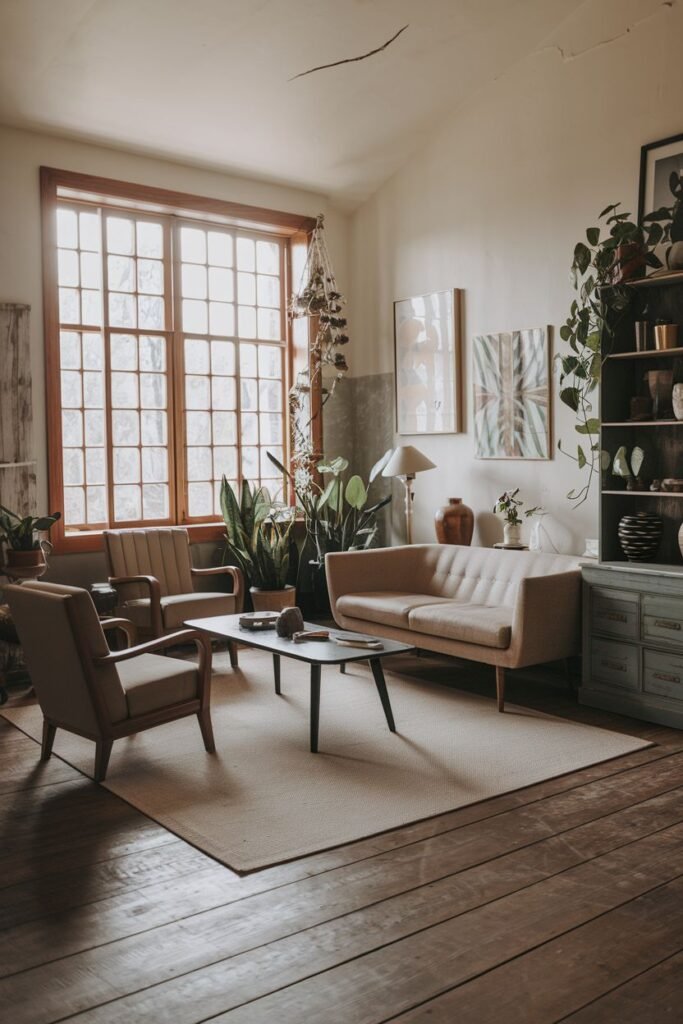
This living room features a large window that floods the space with natural light. Simple sofas and a coffee table are arranged on a rug, while various plants add touches of nature. The wooden floor adds warmth and texture, embodying a key element of Wabi Sabi style.
2. A Simple Wabi Sabi Living Room Retreat with Natural Elements
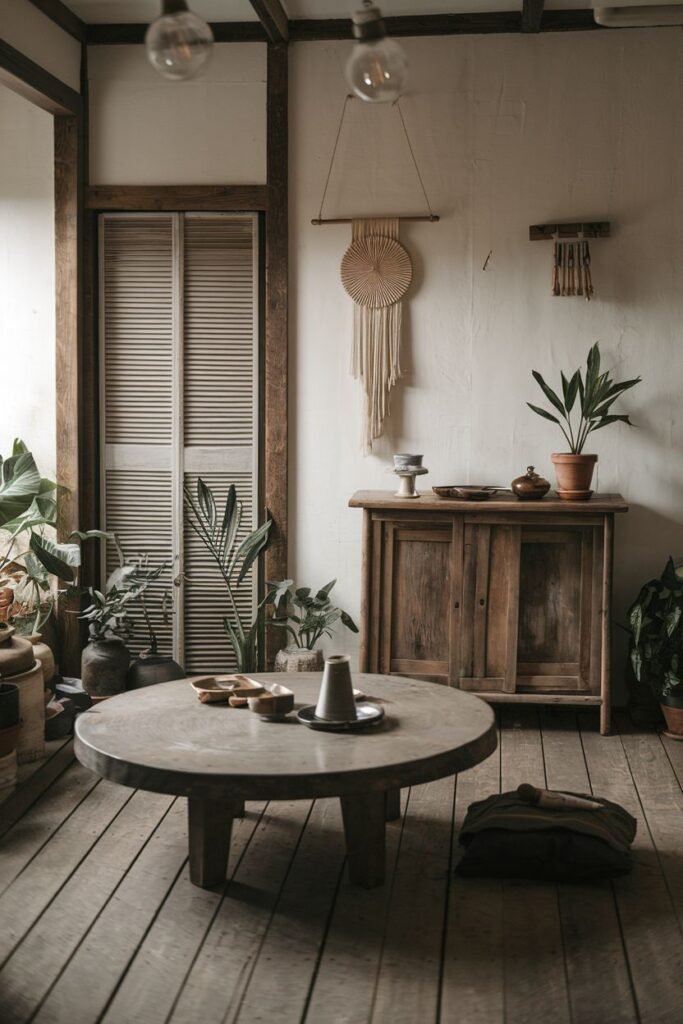
Centered around a round coffee table, this living room uses natural wood for furniture and flooring. Plants are scattered throughout, and a textured macrame wall hanging adds visual interest while maintaining simplicity. A shoji screen-like door enhances the serene, minimalist feel.
3. Embracing Imperfection in a Wabi Sabi Living Room
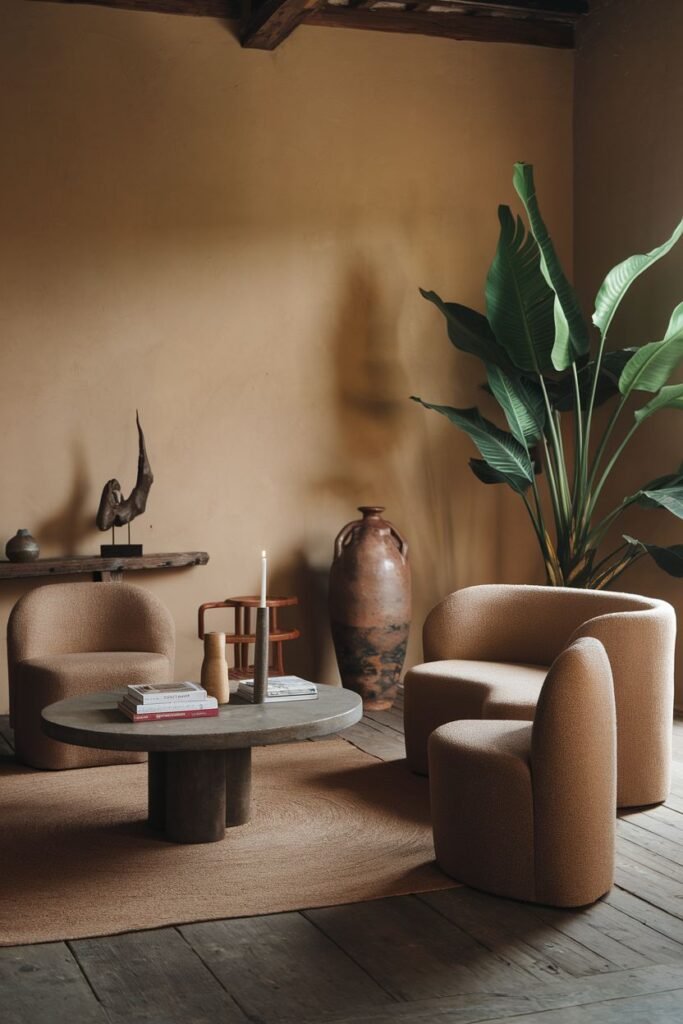
Organic shapes are highlighted in this space, with rounded chairs and a circular stone-like coffee table. A large plant brings vibrant life, contrasting with the textured, earthy-toned wall. Exposed wooden beams overhead add a rustic, imperfect charm.
4. Rustic Simplicity in a Wabi Sabi Living Room
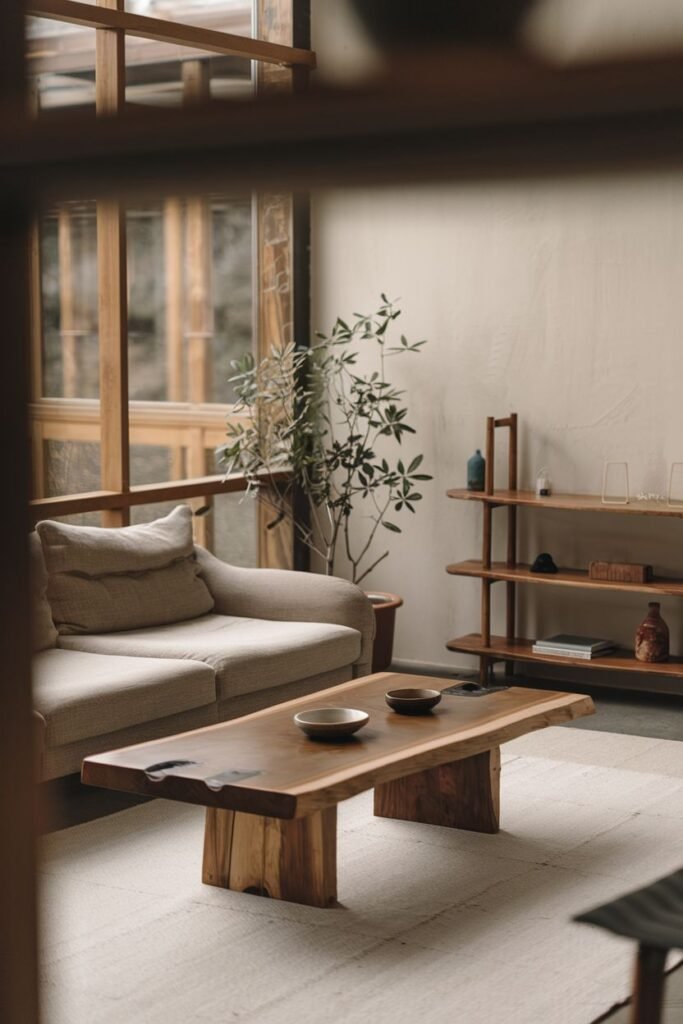
A striking live-edge wooden coffee table serves as a focal point, showcasing the beauty of natural forms. Simple seating and a wooden shelving unit complement the table, while a small tree-like plant softens the space.
5. Natural Textures for a Simple Wabi Sabi Living Room
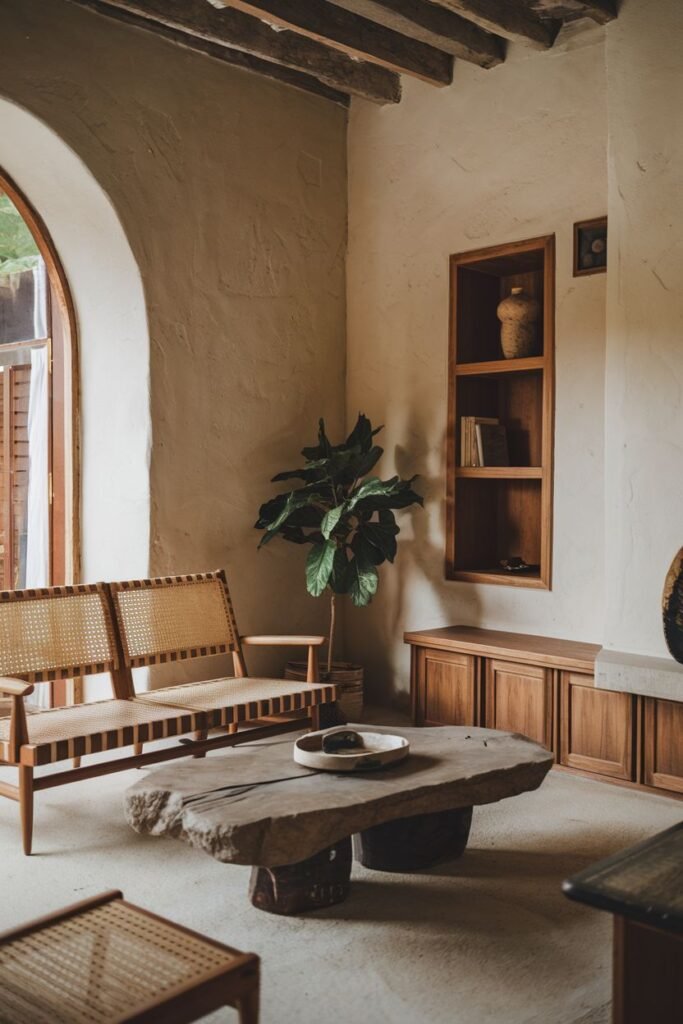
This living room incorporates a variety of natural textures, from the rough stone of the coffee table to the woven rattan of the bench-like sofa. An arched doorway and a textured wall contribute to the unique, imperfect character of the space.
6. Cozy and Simple Wabi Sabi Living Room with Wood Tones
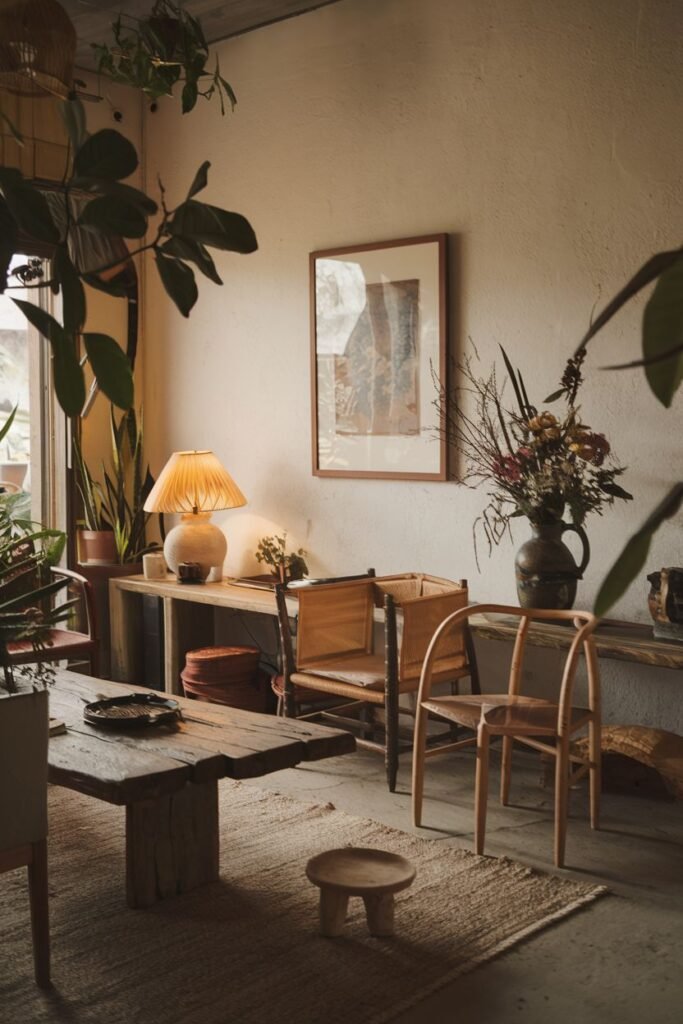
Warm wood tones dominate this inviting space, featuring a substantial wooden coffee table and a mix of wooden chairs. Plants, a simple lamp, and framed art add personal touches without clutter.
7. Layered Comfort in a Wabi Sabi Living Room
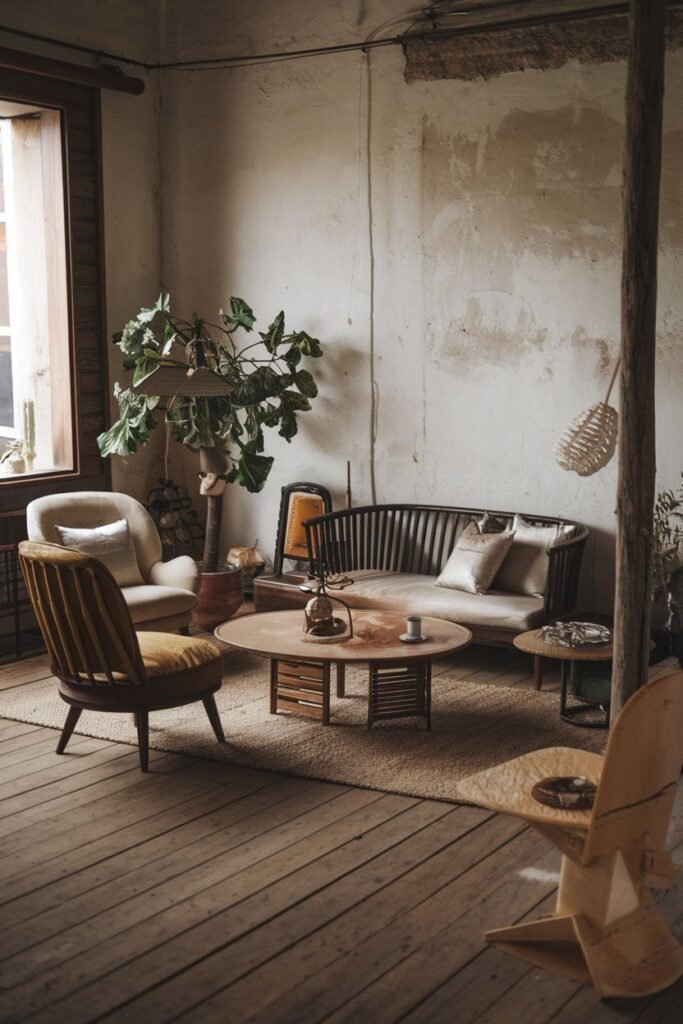
Comfort is key here, with a curved sofa and various seating options arranged around a circular coffee table. A large plant and rustic elements like the exposed beam and textured wall contribute to the layered, lived-in feel.
8. Grounding Your Simple Wabi Sabi Living Room with Low Furniture
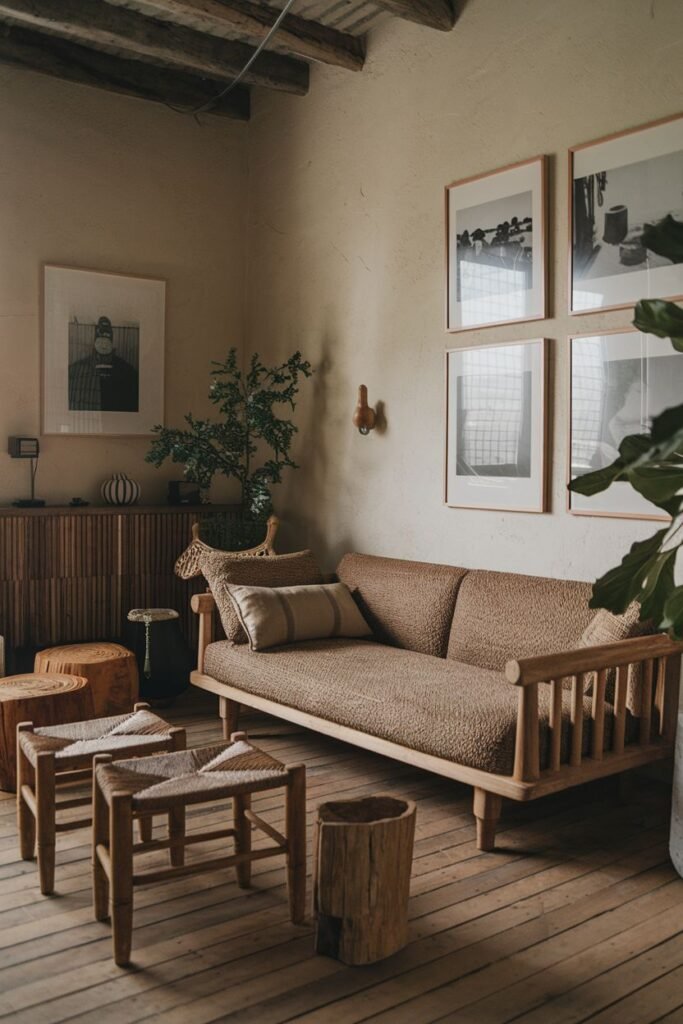
Low-profile furniture, including a sofa and rustic wooden stools, creates a grounded and relaxed atmosphere. Woven details on the furniture add texture, while framed art and a plant complete the simple arrangement.
9. Creating a Serene Wabi Sabi Living Room Corner
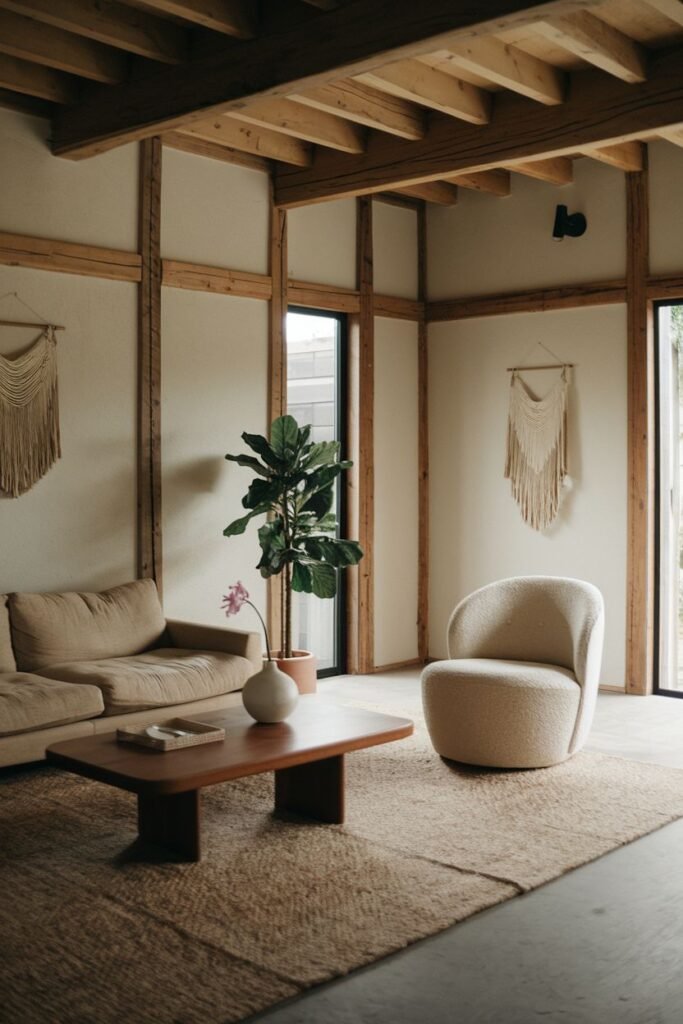
This corner space feels serene and uncluttered with just a simple sofa, a rounded armchair, and a wooden coffee table. A large plant and a textured rug made of natural fibers enhance the calm, earthy aesthetic.
10. Minimalist Wabi Sabi Living Room with Japanese Influence
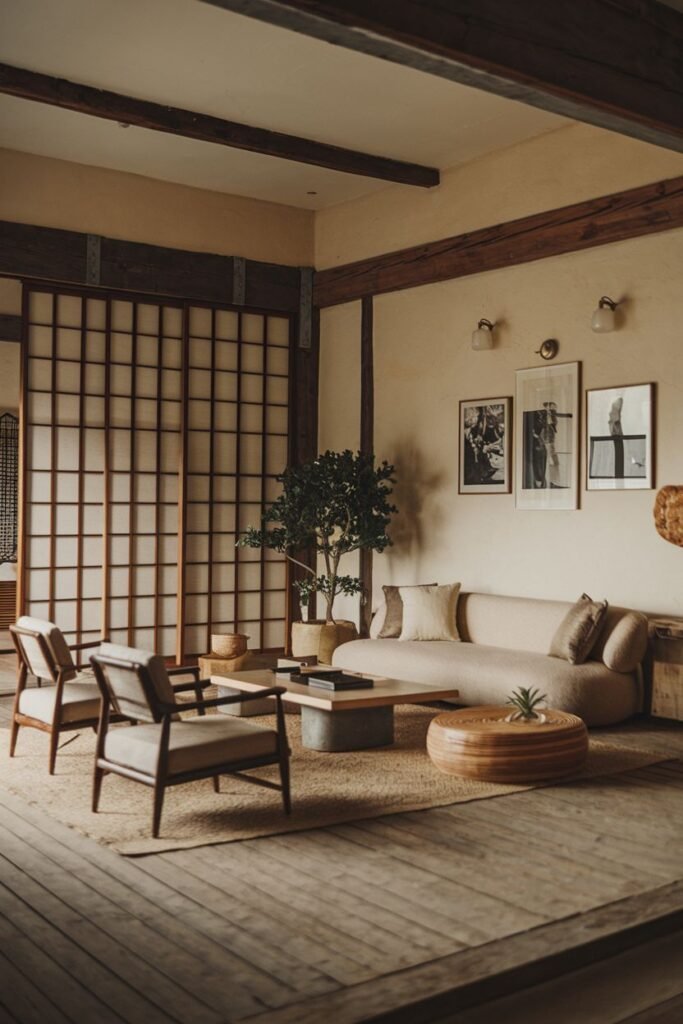
Drawing inspiration from Japanese design, this living room features a large shoji screen wall panel. Simple, low-profile seating and a wooden coffee table are arranged on a natural fiber rug, complemented by plants and minimalist art.
11. Bright and Open Simple Wabi Sabi Living Room
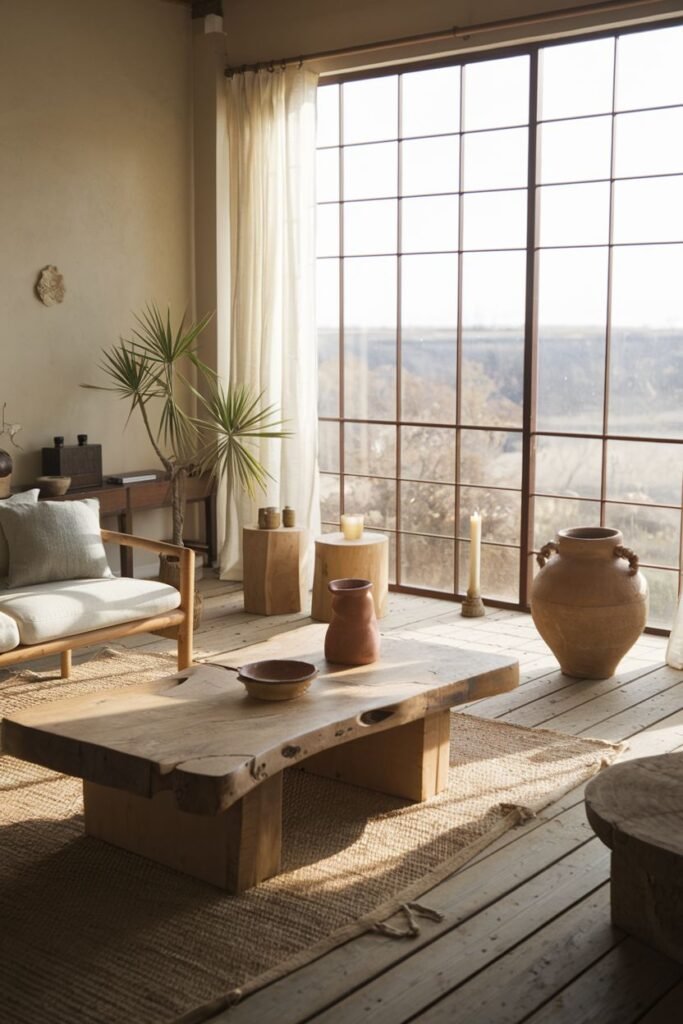
A very large window is a central feature, allowing ample natural light to fill the room and highlight the warm wooden floor. A massive wooden coffee table anchors the seating area, accompanied by large decorative pottery.
12. Utilizing Natural Edge Wood in a Simple Wabi Sabi Living Room
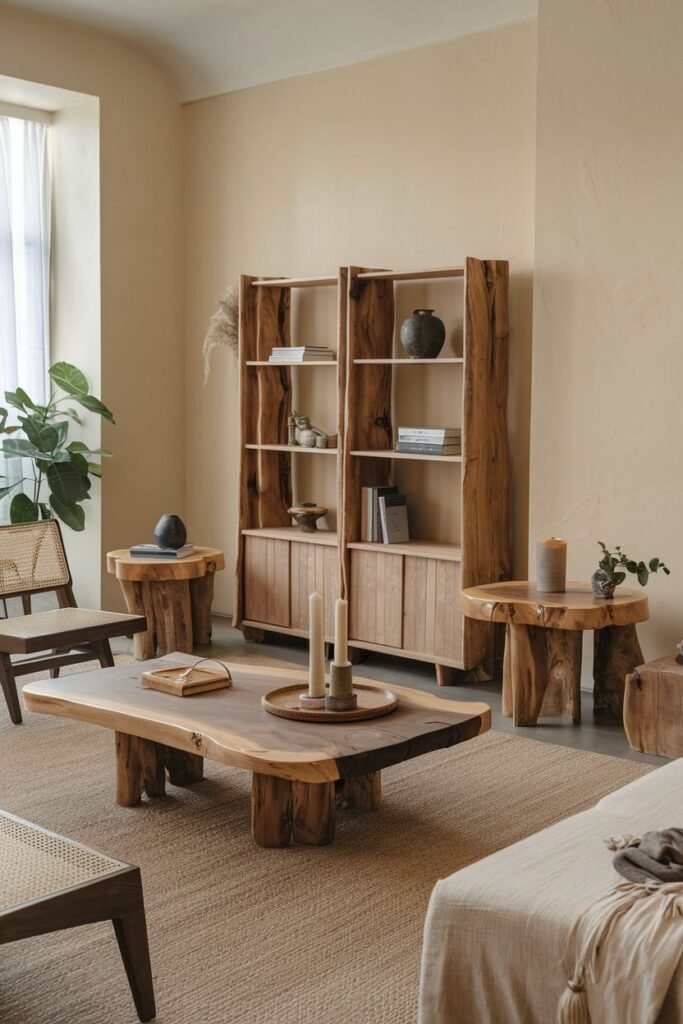
Furniture showcasing the natural edge of the wood, such as the coffee table and shelving unit, brings an organic, imperfect beauty to the space. Simple seating and plants create a calm and grounded environment.
13. Textured Walls and Natural Materials in a Simple Wabi Sabi Living Room
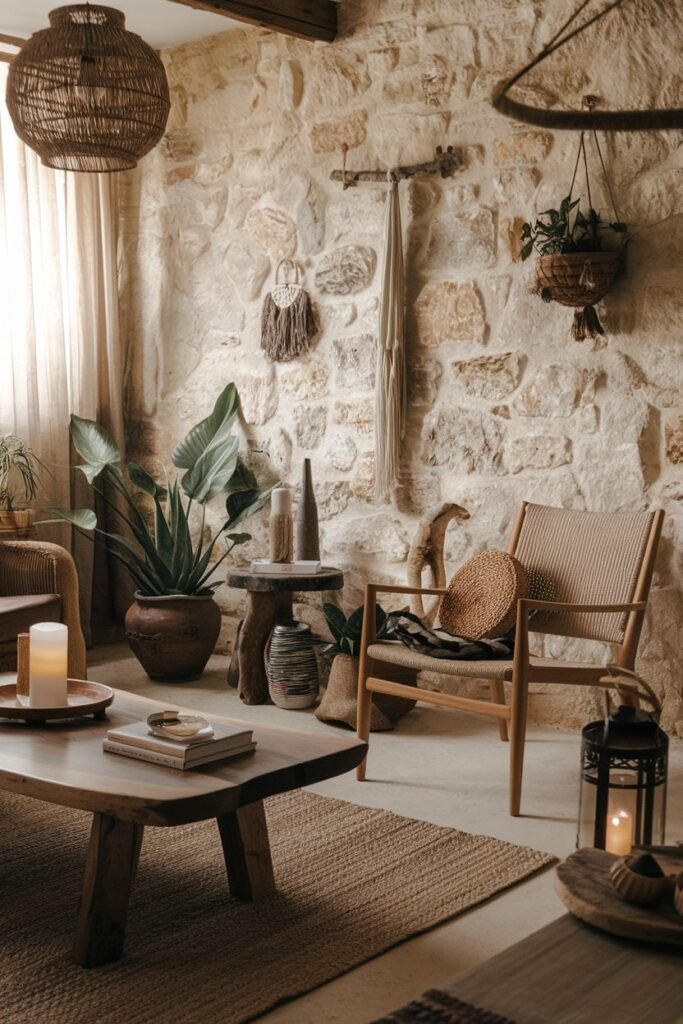
The prominent stone wall provides a striking backdrop, full of texture and character. Natural materials like wood, rattan, and woven fibers are used for furniture, lighting (woven pendant), and decor, enhancing the Wabi Sabi feel.
14. Organized Simplicity in a Wabi Sabi Living Room

A large built-in shelving unit offers ample storage and display space while maintaining a sense of order. Simple sofas and chairs are arranged around a wooden coffee table on a textured rug, creating a functional yet aesthetic living area.
15. Rounded Forms and Warm Wood in a Wabi Sabi Living Room
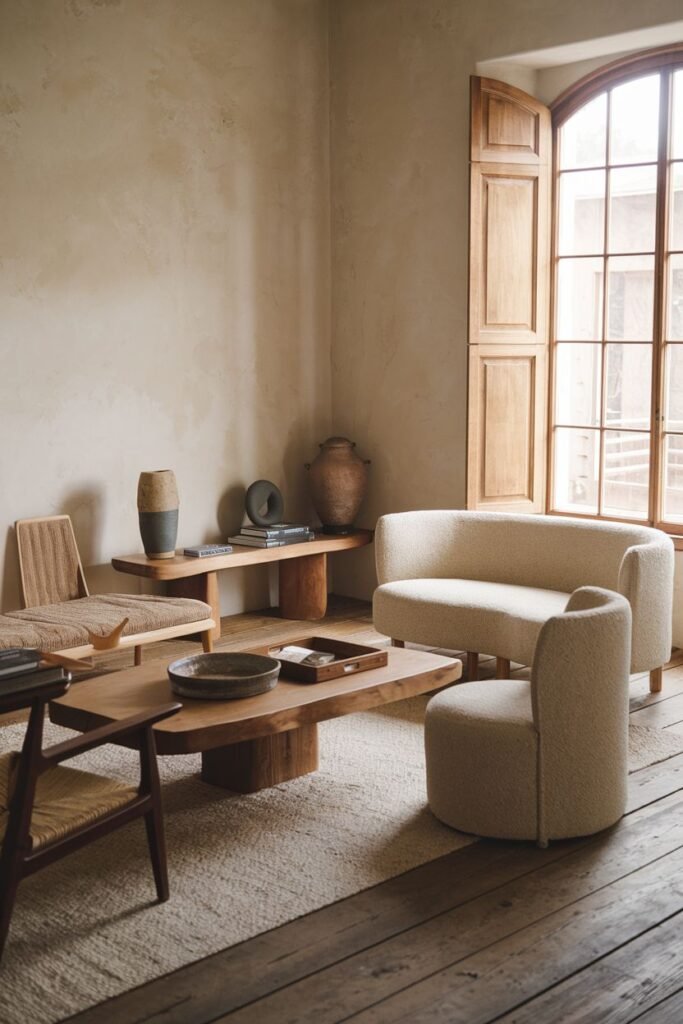
The soft, rounded shapes of the sofa and armchair contrast with the clean lines of the wooden coffee table and rattan bench. Warm wood tones and a large window with shutters contribute to a cozy, inviting atmosphere.
16. Simple Wabi Sabi Living Room Floor Seating
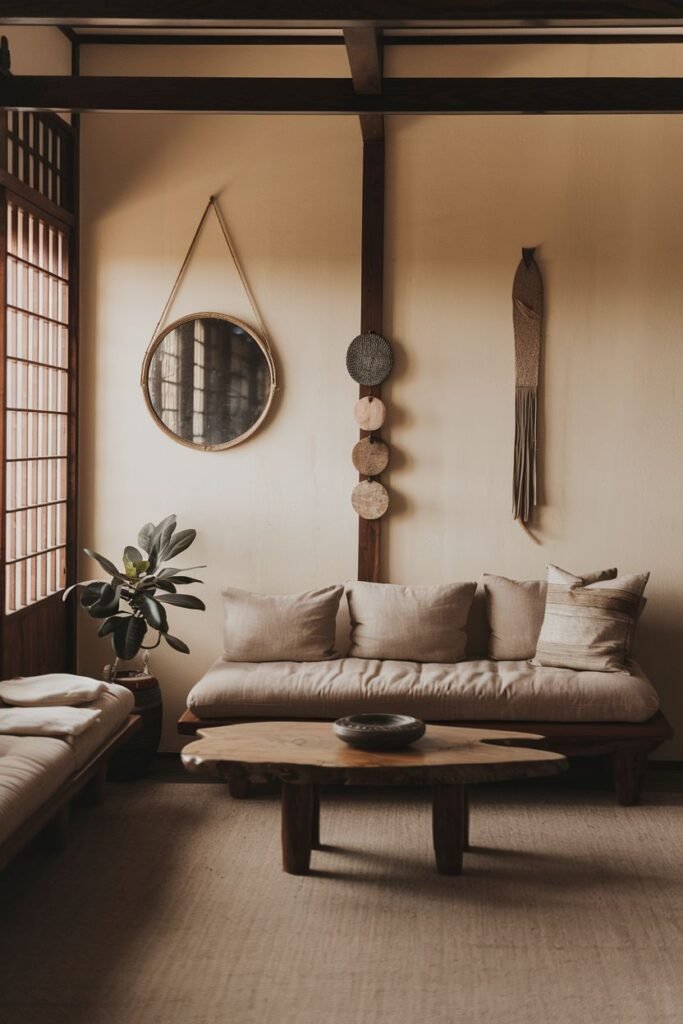
This living room features a low-level sofa or daybed and a coffee table, suggesting a preference for being closer to the ground. A round mirror and a large plant add simple decorative elements to the space.
17. Adding Pattern and Character to a Wabi Sabi Living Room
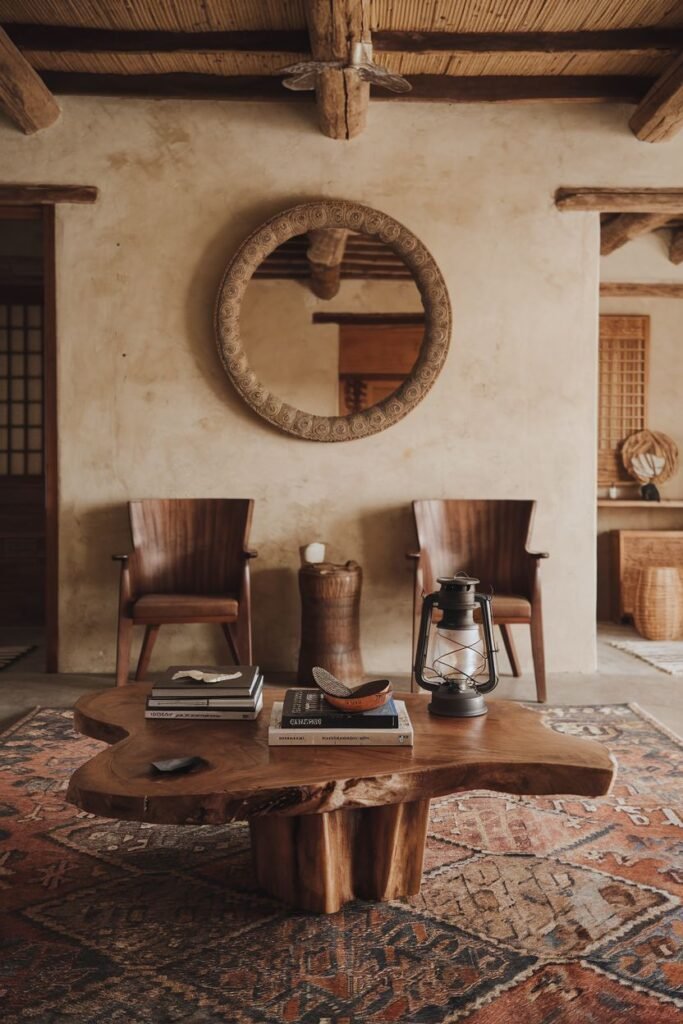
While simplicity is key, a patterned rug adds visual interest and warmth to the wooden floor. A large, decorative round mirror and a rustic lantern contribute unique character to the space furnished with wooden chairs and a live-edge coffee table.
18. Functional and Simple Wabi Sabi Living Room Storage
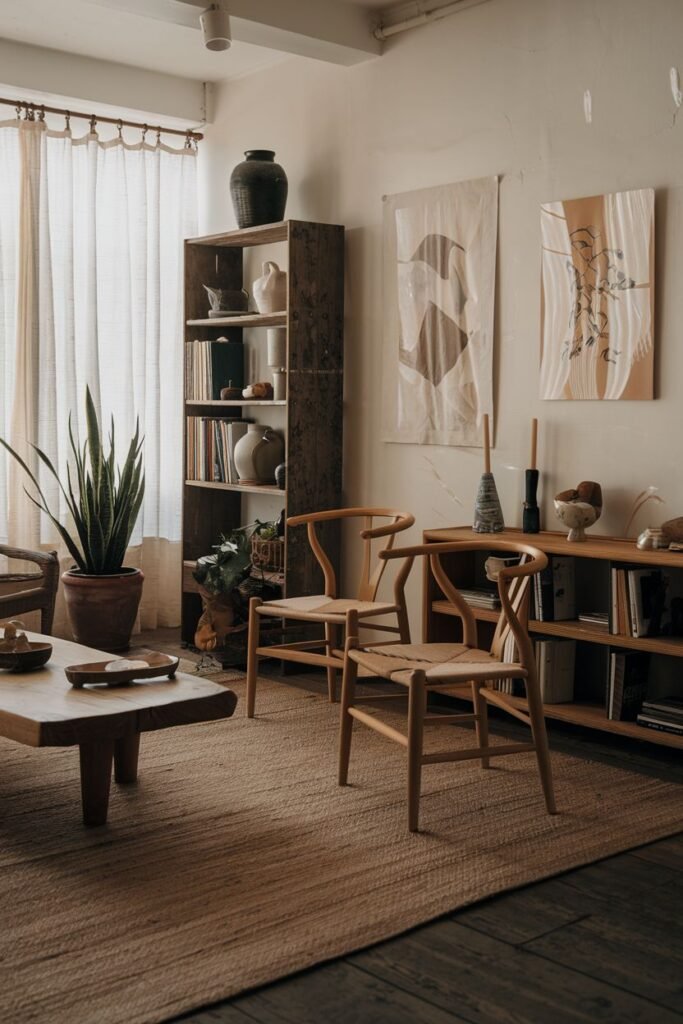
A rustic wooden bookshelf provides practical storage while fitting the aesthetic. Simple wooden chairs with woven seats and a coffee table create a relaxed seating area, complemented by plants and wall art.
19. A Pop of Color in a Simple Wabi Sabi Living Room
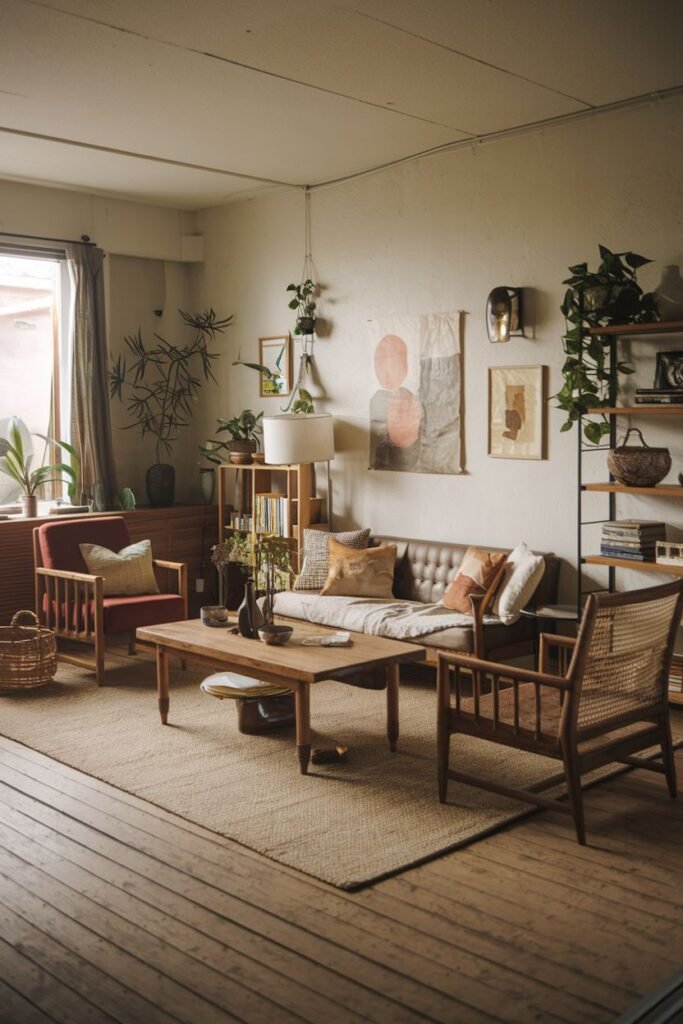
While predominantly neutral, a single armchair in a warm red adds a touch of inviting color to this living room. The space features a mix of seating, a wooden coffee table, shelving, and plenty of plants.
20. Inviting Textures in a Wabi Sabi Living Room
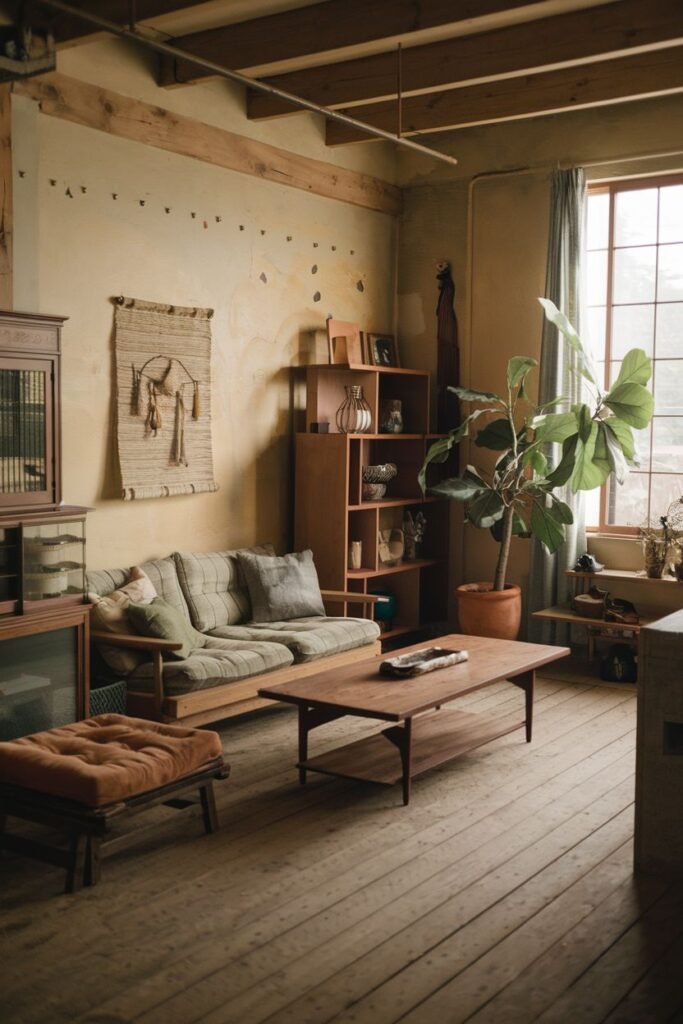
This living room plays with various textures, from the upholstered sofa and ottoman to the woven wall hanging and wooden furniture. A large plant and simple decor complete the layered, tactile environment.
21. Elevated Simplicity in a Wabi Sabi Living Room
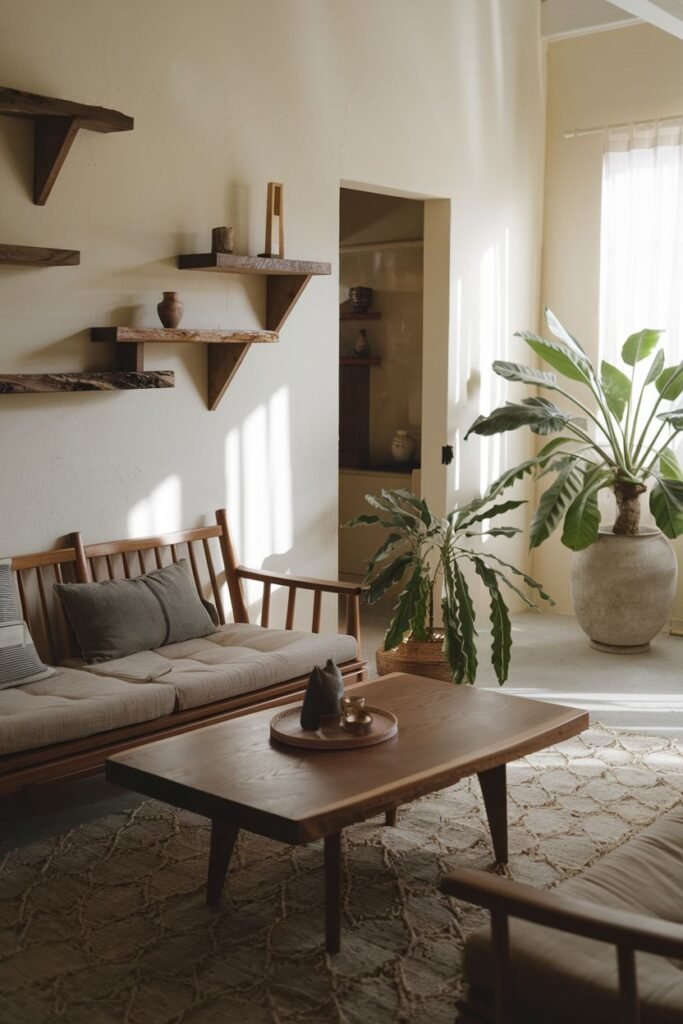
Floating wooden shelves add a sense of lightness and elevation to the wall, showcasing simple decor items. A simple wooden sofa and coffee table are complemented by large, lush plants, benefiting from ample natural light.
22. Minimalist Lines in a Simple Wabi Sabi Living Room
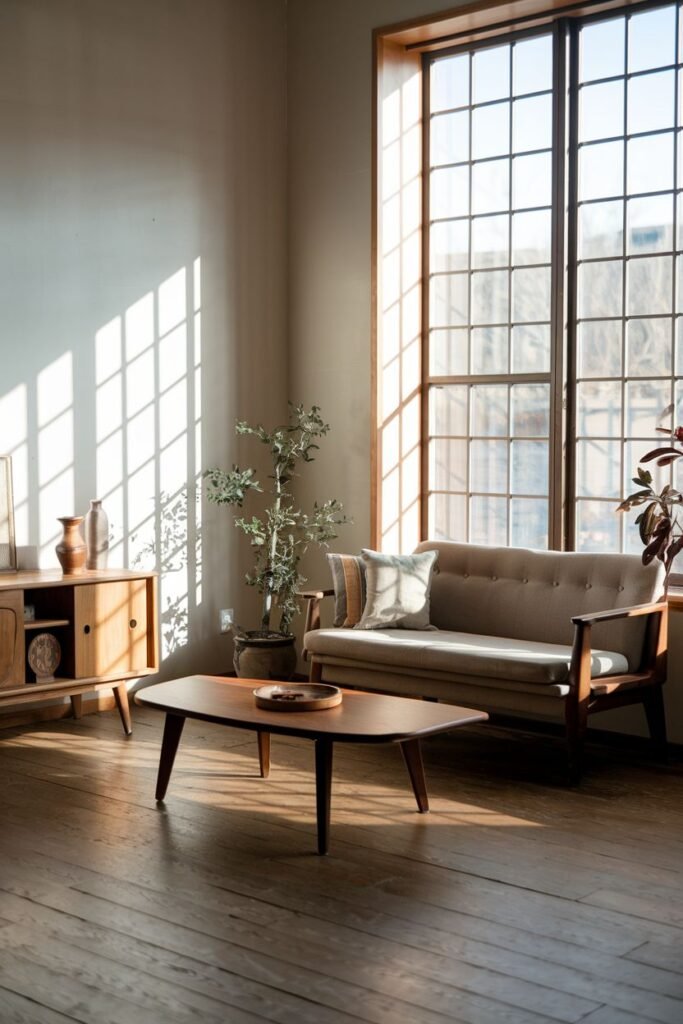
This living room features furniture with clean, minimalist lines, such as the sofa and coffee table. A wooden cabinet and a small plant add warmth, while a large window provides abundant natural light, creating a bright and airy feel.
23. Raised Platform Living Area for a Wabi Sabi Feel

A unique feature is the raised wooden platform, which defines the living area and offers opportunities for low-level seating arrangements. Simple furniture, plants, and rustic wall elements create a distinct Wabi Sabi zone.
24. Celebrating Wood and Weave in a Simple Wabi Sabi Living Room
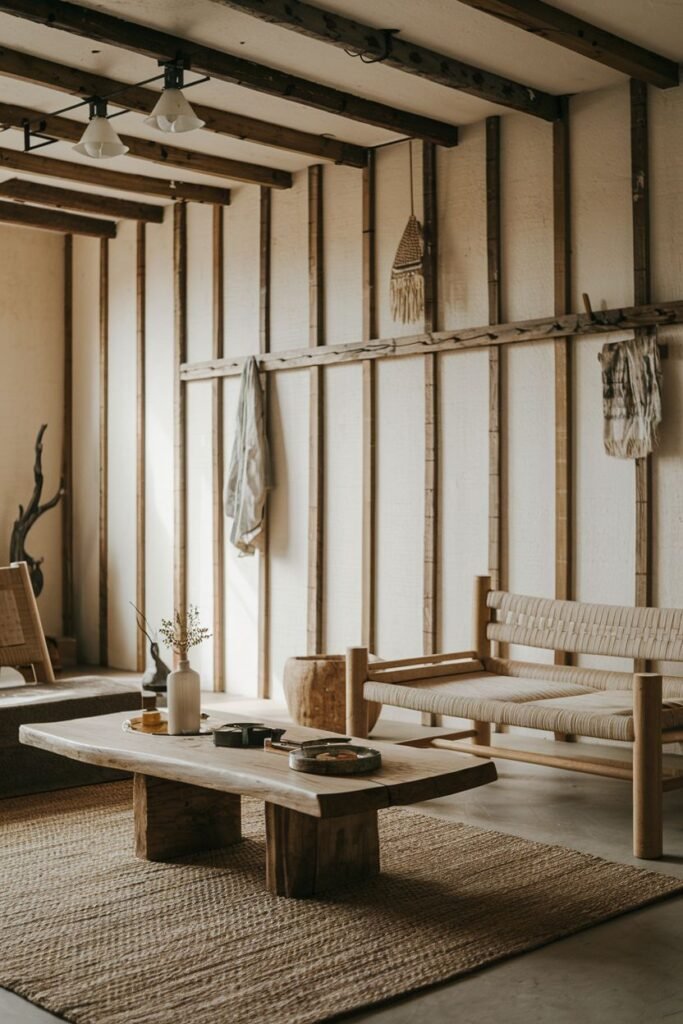
This space highlights the beauty of natural wood and woven materials, seen in the sofa with a woven back, the large wooden coffee table, and the woven wall art. Exposed beams overhead reinforce the connection to natural, raw elements.
Conclusion
The 24 examples presented demonstrate a range of practical approaches to designing a living room with a Wabi Sabi sensibility.
From utilizing natural light and incorporating abundant plant life to embracing the unique character of natural materials and prioritizing simple, functional furniture, these ideas illustrate key tenets of this aesthetic.
Creating a Wabi Sabi living room is less about achieving perfect, polished looks and more about cultivating a space that feels authentic, lived-in, and deeply connected to nature’s quiet beauty.
By focusing on simplicity, natural elements, and an appreciation for imperfection, it is possible to create a truly calming and inviting retreat within the home.
